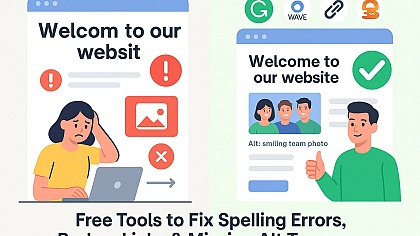
5 Effective Strategies to Boost the Online Presence of Your E-commerce Business
Whether you are new to the business or you have been here for a couple of years, there is no denying that driving sales via e-commerce is beneficial for your company.
However, businesses - whether they have an online presence or not - can go through plateaus and decline. But do not get discouraged in case you are experiencing this. It could only mean that your existing strategies are growing stale.
That said, we have listed five effective strategies that can help boost your e-commerce store’s online presence.
1. Optimise your e-commerce site
When you make an e-commerce website and you notice that your online store produces underwhelming results, it is more likely that you need to optimise your website. After all, an e-commerce website is still a website.
One of the most important things that you should look into is whether you have duplicate web content. E-commerce websites are prone to this since online retailers tend to list similar products.
You can fix this by using canonical URLs and 301 redirects.
Depending on your website's back end, you will need to add the “rel=canonical” tag on the page. Doing so allows your duplicate pages to pass on link equity to your original content. This also informs search engine bots which of your duplicates is the original content; thus, preventing you from incurring a Google penalty.
Another aspect you should optimise is your product images. A recent survey revealed that 74% of younger Internet users prefer image searches.
So, optimizing your product images by adding keyword-rich ALT TEXT ensures that they will appear on relevant image searches. And this could be one way for you to generate website traffic.
2. Produce high-quality content
Producing content for your e-commerce website is more than just writing a company update and then calling it a day.
Sure, you have a handful of things to do as a business owner, but content marketing should also be included in your To-Do list.
Luckily, there are various ways you can implement content planning and marketing for your e-commerce business:
• Produce Content Assets. These are long-form content, complete with high-quality images, which other content producers would be willing to refer to and link to. To have an idea of what content asset you should produce, Joseph Robison shares seven content marketing examples that you can try.
• Create Lifestyle and How-to Videos. Since your potential customers cannot physically touch and scrutinise your products, publishing lifestyle and how-to videos is a great way to entice them to buy. A great example would be a tutorial on how your products are used. For example, a brand like Swarovski often uses elegant lifestyle videos to highlight its jewellery, creating an emotional connection with potential buyers.
By incorporating an online video creator tool into your content strategy, you can easily create professional-looking videos that showcase your products and demonstrate how they are used.
• Use Influencer Content. If you do not have the time or resources to produce your content, you can tap influencers who can help produce content for you. You would be surprised how a video review of your product could bring in sales.
Luxury brands like Tissot often partner with lifestyle influencers to highlight craftsmanship and elevate brand perception, which you can emulate on a scale that fits your business.

3. Be active on social media
Social media was created to help people connect with their loved ones, until businesses found an opportunity to leverage it to their advantage.
Fast forward to today, business owners can even use social media as another e-commerce platform. Just look at Facebook’s Shop tab and Instagram’s shoppable posts.
But before you delve into that, it is best to understand the growing role of social media in your e-commerce business.
For one, you can use it to create a community for your business. For instance, you sell earth-friendly products. You can use your social media accounts to spread the word about zero-waste living and attract like-minded people who would be more open to buying your products.
Secondly, social media is a great avenue to teach people how to use your products. Not to mention that you can bring your audience behind the scenes of how your products are manufactured.
Thirdly, you can use it to showcase your excellent customer support. And lastly, you can use social media to share user-generated content.
If you have the budget, you can even run paid social media campaigns!
4. Run paid marketing campaigns
Speaking of running paid social media campaigns, having pay-per-click (PPC) ads is another great way to boost your e-commerce website’s online presence.
This could come in the form of Text Ads on search results. You can also run Shop Ads on search engine results. Another option is Display Ads, wherein you can post ad banners on relevant websites and content.
To navigate the intricacies of PPC advertising successfully and ensure effective campaign management while maximising your return on investment, it's wise to consult a comprehensive resource like a guide to managing PPC for small businesses or eCommerce stores.
5. Practice re-targeting
On average, 69.57% of online shoppers abandon their shopping carts. However, you can salvage this and improve your sales through retargeting.
Doing so can help you remind customers that they have added an item to their online cart, and they can still proceed with the purchase. The good news is that there are various ways to re-target a potential customer.
This includes targeting them on Facebook using a Custom Audience and the social network’s re-targeting pixel. You can also re-target them depending on three important segments:
- Those who added a product to their cart
- Those who checked a product but did not proceed with the checkout
- Those who complete a purchase
The key here is to use web analytics to personalise your e-commerce remarketing strategy. That way, you can win your prospects back, boost your online sales, and decrease your cart abandonment rate.
Do you have other tips on how e-commerce business owners can boost their store’s online presence? Let us know in the comments!
About the Author: Jake Rheude is the Director of Marketing at Red Stag Fulfilment, an eCommerce fulfilment warehouse that was born out of eCommerce.














